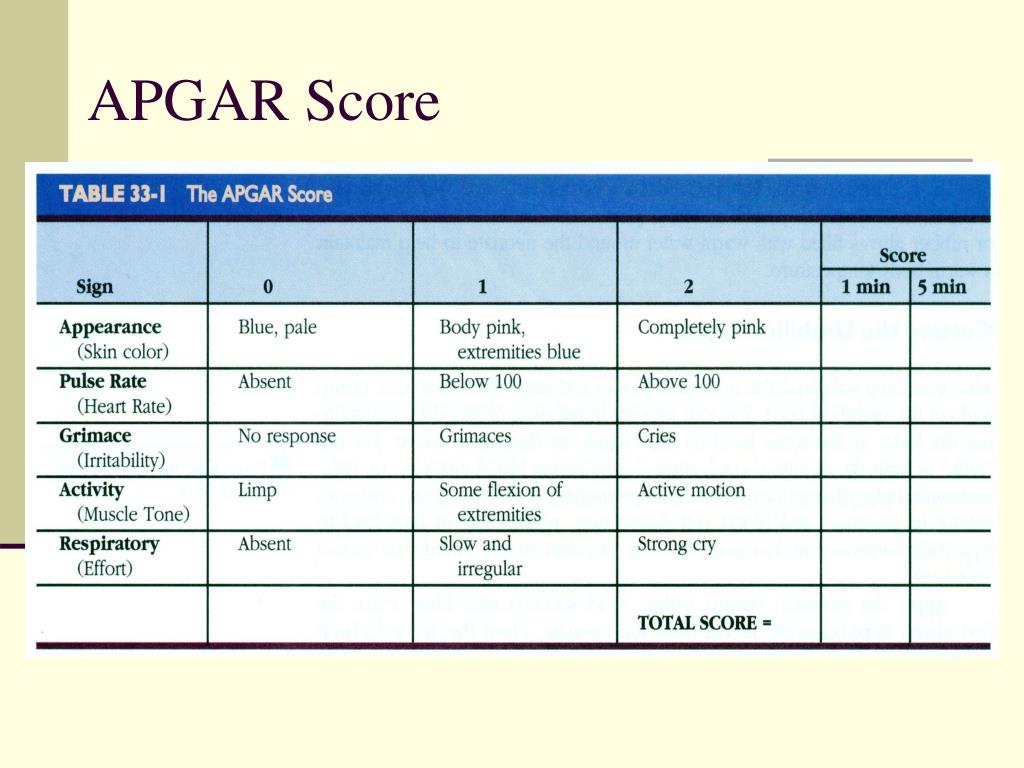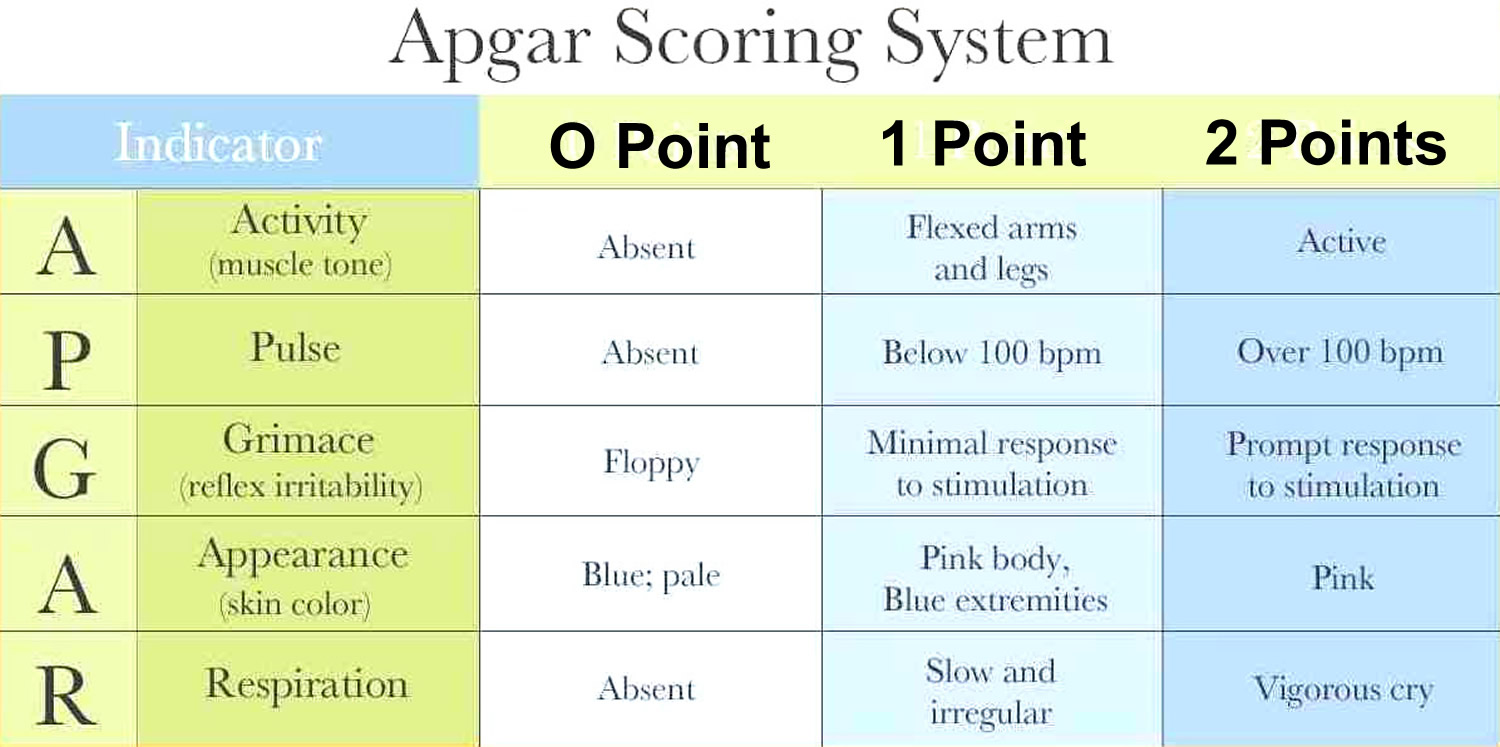

What are the causes of a low Apgar score? If your child suffered birth injury resulting in complications observable just after delivery, please call Stern Law, PLLC at (800) 462-5772 to discuss your legal options for free. For others, however, it may signal a serious and potentially life threatening problem requiring immediate medical attention. If a child is born with flexion and resisted extension, he or she will likely receive a 2.Ī low Apgar score does not mean a child will have serious or long-term health problems, as it is not meant to predict the future health of the child. If the child has limited flexion, then he or she will likely receive a 1.

If a child is not moving at birth (i.e., limp), he or she will receive a score of 0. Muscle tone – A medical provider will assess a baby’s extremities to determine muscle tone.If he or she is breathing well with no difficulty, a doctor will likely assign a score of 2. If the baby struggles to breathe, a doctor will likely assign a score of 1. A child not breathing at birth will receive a 0. Respiration – This category measures a child’s ability to breathe on his or her own.If a child cries in response to stimulation, he or she will likely receive a score of 2. A child who only grimaces will probably be assigned a 1. A baby who does not respond to stimulation will likely receive a score of 0. Reflex irritability– This measures a newborn’s response to stimulation.Above 100, the child will likely receive a 2. Between 60 and 100, a child will receive a 1. Pulse rate – A newborn’s pulse that is below 60 should receive a 0.
APGAR SCORE SKIN
A score of 2 means that the child is born within a normal skin tone. For a child with blue colored extremities, he or she will likely receive a score of 1. If a child receives a score of 0, that typically means that he or she is born with a blue skin tone all over.
Complexion – A medical provider assesses a baby’s skin color. Overall, the 5 Apgar categories are as follows: Healthy newborns should score anywhere between a 7 and 10, although a score of 10 is rarely given. Each category is scored from 0 to 2 for a total cumulative score ranging from 0 to 10. Virginia Apgar developed a scoring system that determines the clinical status of a child based upon five different categories usually administered within 1 to 5 minutes after birth. Respiration – observe the breathing of the child and pick one of three: no respiration (0 pts), weak respiration or cry with irregular breaths and gasping (1 pt), or strong cry with good respiration (2 pts).In 1952, a physician named Dr. Muscle tone – look for flexion and active motion and choose: no activity and limp muscles (0 pts), there is some flexion (1 pt), there is flexion of both arms and legs, the child is moving actively (2 pts). Reflex irritability – stimulate the child with an intranasal suction catheter or by irritating the bottom of feet, then assess: no response to stimulation (0 pts), a grimace on stimulation (1 pt), cry on stimulation (2 pts). Heart rate – auscultate the beating of the child's heart and select according to your examination: no beating (0 pts), under 100 beats per minute (1 pt), over 100 beats per minute (2 pts). In order to give a child a score with the APGAR scale, you have to evaluate its five characteristics:Ĭolor of the skin - choose between all pale or blue (0 pts), blue extremities with pink body (1 pt), and all pink (2 pts). A score of 5 or less at 5 minutes is an indication to obtain umbilical artery blood for an arterial blood gas test in acidosis diagnostic.ĪPGAR scale can be used as well as a method to monitor the effects of resuscitation performed on an infant: a higher score at 5 minutes after birth than at 1 minute postpartum may indicate a positive response to resuscitation.ĭoes your child or patient require a blood transfusion? How much blood do you need to prepare? Please, help yourself with our pediatric blood transfusion volume calculator! Additionally, children with a score below 7 should undergo an additional assessment at 10, 15, and 20 minutes postpartum. A score of 7-10 points is defined as reassuring, 4-6 points as moderately abnormal, and 0-3 as low.Īll infants should be reported with APGAR score at the time of 1 and 5 minutes after the birth. In each of these categories, a child can score 0, 1, or 2 points, which means that altogether the result of the APGAR score can be between 0 and 10 points. There are five components of the APGAR scale: color, heart rate, reflexes, muscle tone, and respiration. Virginia Apgar, an anesthesiologist at New York–Presbyterian Hospital, as a tool to rapidly assess the health status of newborn children.






 0 kommentar(er)
0 kommentar(er)
